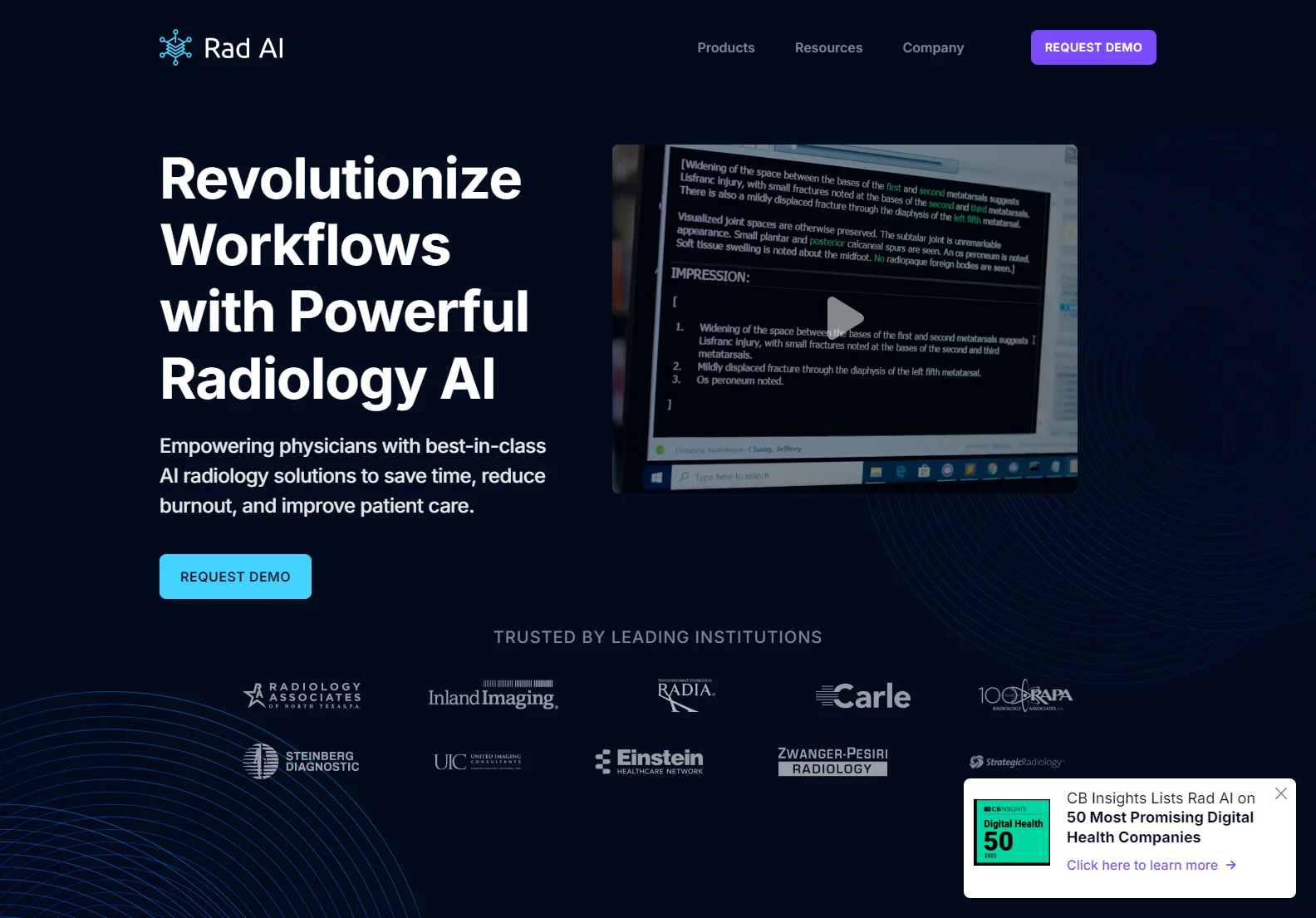Rad AI: Revolutionizing Radiology Workflows with AI
Rad AI is transforming radiology with its cutting-edge AI software, designed to streamline workflows, reduce burnout among radiologists, and ultimately improve patient care. This powerful suite of tools offers a range of features to enhance efficiency and accuracy in radiology practices.
Key Features of Rad AI
Rad AI's core functionality centers around three key areas:
- Rad AI Reporting: Automates report generation, reducing the time radiologists spend on documentation and freeing them to focus on patient care. The AI assists in generating accurate and comprehensive reports, minimizing errors and ensuring consistency.
- Rad AI Impressions: Provides AI-powered preliminary interpretations, helping radiologists prioritize critical cases and expedite diagnosis. This feature significantly reduces the time spent on initial image analysis.
- Rad AI Continuity: Automates patient follow-up management, streamlining communication and reducing administrative burden. The system helps schedule appointments, send reminders, and track patient progress, ensuring timely and efficient care.
Benefits for Radiology Practices
Implementing Rad AI offers numerous advantages:
- Increased Efficiency: Automation of tasks like report generation and follow-up management frees up valuable time for radiologists.
- Reduced Burnout: By handling routine tasks, Rad AI helps alleviate the workload and stress associated with radiology, leading to improved job satisfaction.
- Improved Accuracy: AI-powered analysis helps minimize errors and ensures consistent reporting, leading to more accurate diagnoses.
- Enhanced Patient Care: By streamlining workflows and improving accuracy, Rad AI ultimately contributes to better patient outcomes and timely care.
Rad AI Compared to Other AI Radiology Solutions
While several AI solutions exist in the radiology space, Rad AI distinguishes itself through its comprehensive suite of tools addressing reporting, impressions, and follow-up management. Unlike some competitors focusing solely on a single aspect of radiology workflows, Rad AI provides a holistic approach to improving efficiency and accuracy. This integrated approach minimizes the need for multiple disparate systems, simplifying workflow integration and reducing training overhead.
Conclusion
Rad AI is a game-changer for radiology practices seeking to enhance efficiency, reduce burnout, and improve patient care. Its comprehensive suite of AI-powered tools offers a unique and effective solution for modern radiology challenges. The positive feedback from leading institutions underscores the significant impact of Rad AI on the radiology landscape.
